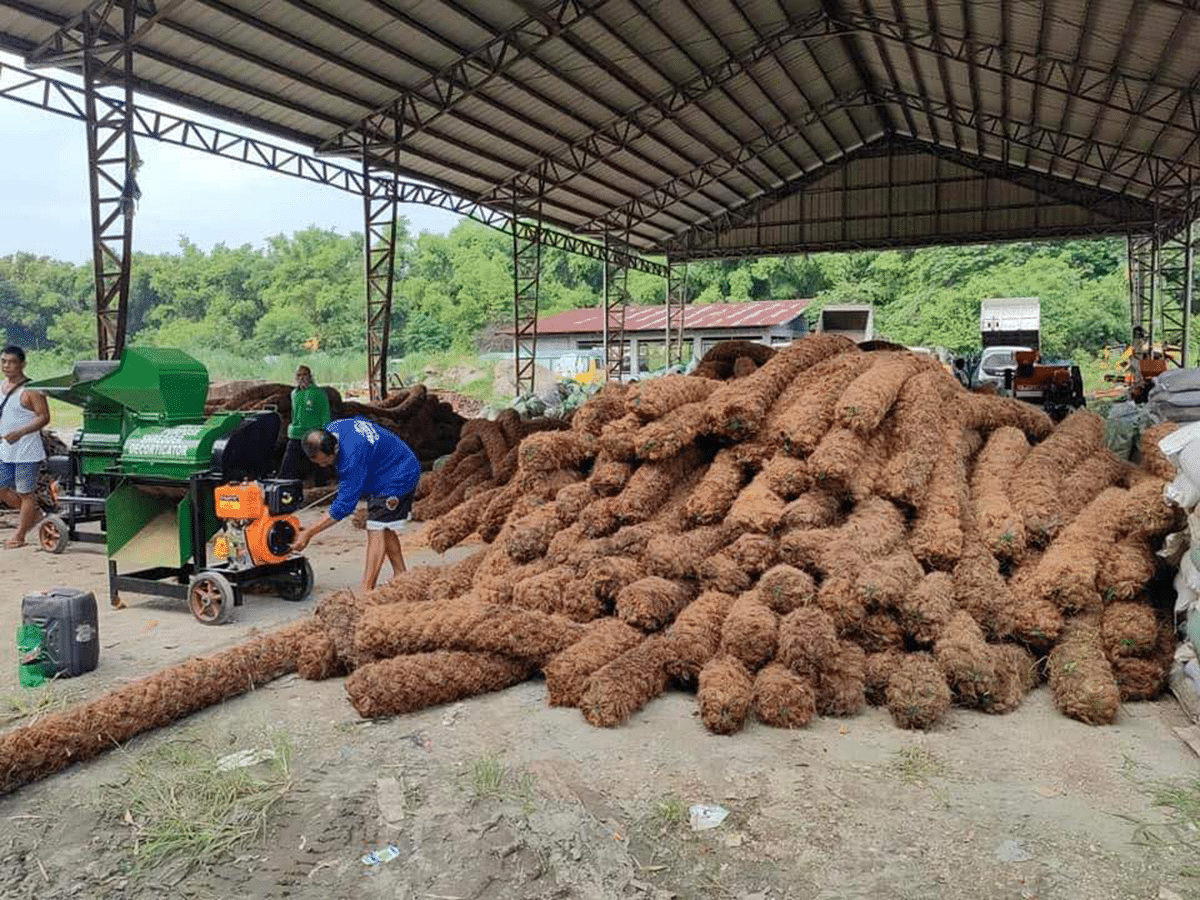
At least 780 meters of floating booms made out of coconut waste products and plastic bottles are readied in Pampanga to stop the seepage of fuel oil that has spilled from a motor tanker that sank about 30 kilometers from Limay in Bataan on July 24. | PHOTO COURTESY OF GERALD GLOTON
CITY OF SAN FERNANDO — The Pampanga provincial government has laid out 780 meters of floating booms made out of coconut waste products and plastic bottles to stop the seepage of fuel oil that has spilled from a motor tanker that sank about 30 kilometers from Limay in Bataan on July 24.
At least 57 booms at a length of 342 meters were placed at the mouth of the Batang Dos River, an official of the Pampanga Disaster Risk Reduction and Management Council (PDRRMC) said in a report.
Twenty more booms spanning 120 meters on the Baruya River, 32 booms extending 192 meters on Bancal Pugad, and 21 booms covering 126 meters on the Mabuanbuan River had been secured on bamboo stacks, according to PDRRMC officer Angelina Blanco.
Using coconut husks donated by Batangas and Quezon provinces and shredded hair, Pampanga has produced 1,822 booms as of Aug. 12, according to Art Punsalan, head of the provincial government environment and natural resources offices.
Blanco did not cite laboratory results of water and air samples. Still, an Inquirer source who showed an Environmental Management Bureau’s Aug. 12 report said six stations recorded “within standard” findings.
The PDRRMC, chaired by Gov. Dennis Pineda, projected the directly affected fisherfolk at 21,621 in 93 villages in the coastal towns of Guagua, Lubao, Macabebe, Masantol, Minalin, and Sasmuan.
Pineda said they are fishermen, fishpond operators or owners, workers, vendors, and boatmen. On Tuesday, a big fishpond owner in Minalin was in a wait-and-see mode rather than opting for an early harvest.
“The oil slick has not reached Pampanga waters yet, and the dikes are protecting the [inland] ponds. Many of us have managed the volume of tilapia we sell to buyers who pick up their daily supplies. So far, business is still safe, said the trader. INQ